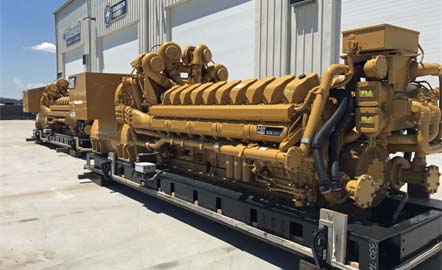College Campus Backup Power Requirements
College campuses from large to small require a backup power supply. This blog covers how many colleges rely on generators for emergency power.
College and University Campuses Today
College campuses are divided into a few different size categories:
- Junior Colleges - Often less than 25 buildings educating students to an associates level of study.
- Community Colleges - Mid-sized campuses. Dormitory housing available. Many have sports arenas and extracurricular buildings.
- Large College Complexes - Campuses can be more than 1,000 acres with hundreds of buildings.
Stanford University is an example of a large college complex. It is located on 8,180 acres of land and boasts a 70-acre shopping center, 700-acre research park, post office and approximately 700 buildings. Almost 50 miles of roads are needed to connect all of the buildings together.
The University of Washington is a public research university located in Seattle Washington. It has a wide variety of study programs including many divisions in the healthcare arena. Lecture halls, laboratories, stadiums, museums, and conference centers make up the 500-plus buildings on the campus. Many of these buildings require an uninterruptible power supply. They utilize two separate styles of emergency power supplies: Battery Bank Back-Up and an Emergency Generator.
Power Requirements at Colleges
August typically marks the return of students to campuses. Throughout the school season, most college campuses operate at or near capacity. Classrooms and adiministrative facilities are full and everyone relies on power every day. Safety of the staff and the student body requires emergency power during power outages. Campuses with hospitals and facilities that conduct medical research require constant power. Power related problems like complete power outages, brownouts, voltage spikes, and other issues such as low voltage can cause downtime and financial losses.

Colleges with older buildings sometimes have a battery bank option for emergency power. This option is mostly being phased out. Batteries have a shelf life, require maintenance, and supply power for a short time only. Many schools also have events at off-grid locations and usually require mobile power for those operations.
Backup Power Systems & Role Generators Play
A complete backup power system with an emergency generator as the centerpiece (and other supporting components) is typically the most effective solution. A generator includes an engine, alternator, cooling system, and a control system. Engines are commonly diesel or natural gas. A backup generator combined with an Uninterrupted Power Supply (UPS) and an Automaitic Transfer Switch (ATS) all work together to provide constant power during a utility power outage when properly set up.
When an outage occurs, and a backup power system is in place, a basic sequence of events occurs:
- Utility power is lost. UPS immediately assumes the load.
- ATS senses the main outage, starts the generator up, and switches the load to the generator when ready (usually in a matter of seconds or minutes).
- Utility power is restored. ATS switches the load back to utility.
- ATS sends the signal for the generator to gradually be powered down.
- UPS switches back to charging mode.
Generator Source offers a complete line of backup generators for any power needs from 20 kW to 4000 kW. We have helped provide high-quality equipment and solutions to schools and universities throughout the U.S. and Canada, and various islands around the world. To view our low hour pre-owned generators, visit our
Used Generators page or to browse new generators, please visit
New Generators. Our rental services also provide temporary power needs in select markets and sizes.
Contact Us today to with any questions.
Diesel Blog Team
| 8/27/2018 1:01:05 PM
|
0 comments